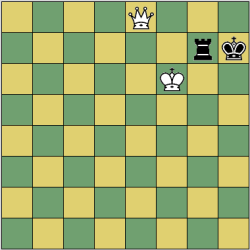I finally started to study chess endgames and decided that it might be best to actually start at the beginning of the book (I am currently using Bruce Pandolfini's "
Pandolfini's Endgame Course
"). However, every endgame book I looked into starts with studies of elemental checkmates and other positions without pawns. However, positions without pawns rarely occur in chess games. This makes me wonder if it actually makes sense to spend a lot of time analyzing these positions.
First of all, one might say that pawnless positions are much less complex than positions with pawns. Therefore, it cannot possibly take that much time to go through these introduction(?) chapters. To my surprise, it turned out that even in clearly won positions it can require accurate play to actually execute the win. As
Blue Devil Knight also reported recently, examples such as K+B+N vs. K are definitely won but can be tricky to execute even for good players. Therefore, it takes a lot of time to develop an understanding of even the most basic positions, the elementary mates.

This week I decided to "graduate" from the elementary mates and to move on to the battle between heavy pieces. In general, the queen (white) wins against a single rook (black). However, black has drawing chances if she/he manages to keep the rook next to the king. Among the chess positions analyzed by and named after the chess master
Francois-Andres Danican Philidor (1726-1795) is also the queen vs. rook endgame position shown on the left. This is a
zugzwang position. With black to move and forced to move her/his rook away from the king, white wins quickly. Regardless which move black chooses, white can either checkmate or capture the black rook with a queen fork. For instance, the only legal move for the black king,
1. ... Kh6 allows white to pin and capture the rook with
2. Qf8. Moving the rook by playing, e.g.,
1. ... Ra7 enables white to capture it by
2. Qe4+ Kh8 3. Qh1+ Kg8 4. Qg1+ forking black's king and rook. However, it is white's move. White's goal is to get in the same position as shown above, but with black to move. This can be achieved by playing
1. Qe4 Ka8 2. Qa8 Kh7 and after 3. Qe8 the pieces are back on their original positions with black in
zugzwang. White wins as described above.
As mentioned above, it took me quite a while to comprehend Philidor's position. One of the reasons for my troubles studying these seemingly simple chess positions is that I am still not able to analyze variations longer than, say, 2 moves. In chess endgame positions, the number of possible moves is typically much lower than in typical middlegame positions. However, it is often necessary to carefully analyze much longer variations to prevent the opponent from escaping or even forcing a draw. As a consequence, I came to the conclusion that studying very basic endgames will probably help me to improve my general ability to analyze positions.


